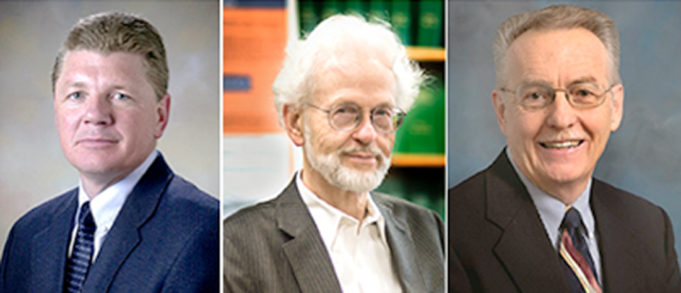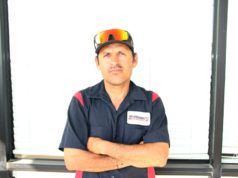When Vistasp Karbhari became president of the University of Texas at Arlington in 2013, he made it clear that he wanted the school to be categorized as Tier One, a status afforded to nationally recognized research facilities such as Texas A&M University, Rice University, and the University of Texas at Austin. He is now three steps closer to achieving that goal.
The National Academy of Inventors recently named three UTA professors as fellows. Three more. UTA’s total number of fellows is 13, the highest in Texas and the second highest in the nation, right behind The University of South Florida.
To be named a fellow, who is a college professor or administrator with outstanding achievements in either academia or research, a candidate must be nominated by his or her peers before he or she is presented to an 18-member selection committee. The candidate’s contributions to the economy and people’s quality of life are considered. UTA’s recent inductees include Kenneth Reifsnider, mechanical and aerospace engineering professor; physics professor David Nygren; and Duane Dimos, university vice president for research.
“Nominees should have also made outstanding contributions to innovation in areas such as patents and licensing, innovative discovery and technology, significant impact on society, and support and enhancement of innovation,” said Keara Leach, the academy’s program director.
Founded in 2010, The National Academy of Inventors is widely recognized as the home of the most sought-after award by inventors who work in academia.
Dimos couldn’t be prouder. Before he came to UTA last year, he wrote 140 research papers and for 25 years worked at Sandia National Laboratories, a New Mexico-based federal laboratory that develops innovations for local, international, and nuclear security. Dimos, who holds 11 patents plus a master’s degree in material science engineering, has been involved in breakthroughs involving high-temperature superconductors. Colleagues Reifsnider and Nygren have helped develop solid oxide fuel cells and mammography X-ray imaging.
Dimos said he hopes UTA’s research is best remembered by how it can help people.
“Often, there’s a lot of great research that goes on that’s more fundamental and mostly in publications,” Dimos said. “But the patented research is usually more application-oriented, more appropriate for use.”
Leach pointed to the university’s Strategic Plan 2020 as a catalyst for this research. The plan, also referred to as “Bold Solutions –– Global Impact,” aims to set UTA on the path toward becoming the definitive 21st-century urban research university.
“While Tier One status has specific criteria that must be met per the legislature, and which UTA is very close to meeting to, the end goal is not to stop at Tier One but to be one of the best of the best and a thought leader not just in the Metroplex but internationally,” Karbhari said.
The plan aims to improve health and the human condition, plus create sustainable urban communities, influence the global environmental impact, and foster data-driven discovery.
“It takes people a while to really notice what you’re doing,” Dimos said. “Sometimes, having things like this that create a little bit of visibility helps us get some attention so that people can really pay attention to the things going on here that matter. If some of us getting recognition can help put focus on a university that’s doing great things, for me, that’s a win.”
Karbhari, who is a 2013 fellow himself, said that ideas are the cornerstone of UTA’s development.
“Pioneering faculty … are conducting cutting-edge research and training undergraduate and graduate students to solve the pressing problems of today and tomorrow as they also make fundamental discoveries that will change our futures in the years to come,” Karbhari said.
UTA’s three new fellows will be inducted on Friday, April 15, during the academy’s fifth annual conference, in Washington, D.C.
“This is a university that prides itself in innovation,” Karbhari said.












